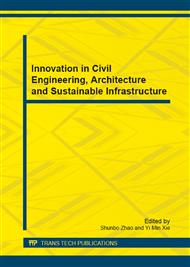p.390
p.395
p.400
p.405
p.409
p.414
p.419
p.422
p.427
Experimental Study of Ultrafiltration of Eutrophicated Source Water in Combination with Sand Filter and Biological Contact Oxidation
Abstract:
The experiments of ultrafiltration of Taihu Lake water with sand filter and water- dropping aeration biological contact oxidation combinations were evaluated. The experiment results showed that under the conditions of the average water temperature was 19.8°C and the HRT of the biological contact oxidation was 1.5h, the removal rates of turbidity, ammonia nitrogen, CODMn and algae by technological purification process were 99.1%, 85.2%, 53.6% and 98.7% respectively. As a comparison, the removal rates of turbidity, ammonia nitrogen, CODMn, algae, UV254 by routine purification process respectively were 96.6%, 16.3%, 35.8% and 95.5% separately in Wuxi Chongshan waterworks at the same water temperature. Under the conditions of approximately equivalent in investment and running expenditure by technological and economical analyses, the efficiency of technological purification process was higher than that of routine purification process.
Info:
Periodical:
Pages:
409-413
Citation:
Online since:
November 2012
Authors:
Price:
Сopyright:
© 2012 Trans Tech Publications Ltd. All Rights Reserved
Share:
Citation:


